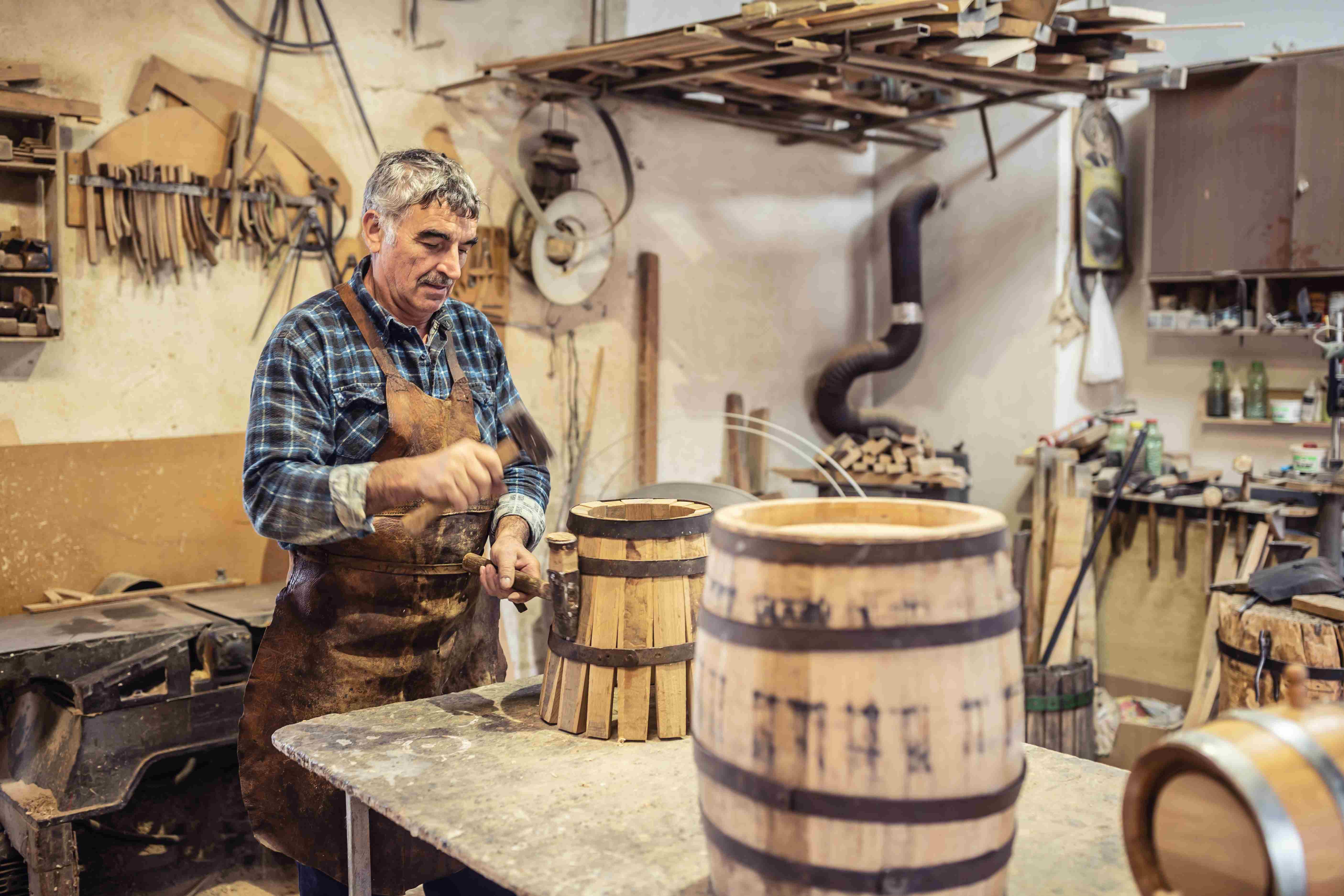Barrels play an indispensable role in whisky production. They are not just containers for whisky ageing , but they also add flavours into the liquid, exerting a decisive influence on the taste of whisky. Do you know what is the differences between regular wooden barrels and those suitable for ageing whisky?
Traced back to history, barrels were used just for transporting and storing liquid, but soon people discovered that liquid aged in barrels had unique colours and flavours. At first, people tried using different types of wood such as pine and cedar to make whisky barrels, but eventually found that only oak was suitable for whisky. Oak's unique grain prevents liquid from leaking and it has excellent flexibility, allowing it to be bent into different shapes after heating. Oak also has the right amount of pores that allow the liquid to slowly mature as it contacts with air. However, among the hundreds of oak species, some have too many pores, high tannin levels and tight grain, making them unsuitable for producing whisky barrels. Common oak species used for whisky barrels include American oak, European oak, Japanese oak, and more.

After learning why oak is used for making barrels for ageing whisky, let us continue to explore how they are made. First, workers select and cut down suitable oak trees, then transport and cut them into different sized planks at a sawmill. Since the tannin and flavour of fresh wood are usually too strong, the wood planks need to be air-dried for several years after cutting before they can undergo the final step: shaping. Oak barrels are made up of different parts, including heated and shaped curved stave planks, flat heads and ends, and various sized metal hoops and rivets that secure the planks together to form a watertight barrel. Once a bung hole is drilled into one of the planks and sealed with a bung, the barrel is ready to be filled with whisky. Excluding additional flavour treatments such as charring and toasting, a wooden barrel takes several decades or even centuries to make, starting from the planting of an oak tree.
Different sized oak barrels have different effects on the maturation of whisky. The larger the barrel, the less surface area the whisky has to contact with wood, resulting in less flavours imparting from the cask, vice versa. Common oak barrel types include the Gorda 700-liter barrel, which is often used for blending due to its larger size,the Hogshead 250-liter barrel, the Barrel 200-liter barrel, the Sherry Butt 500-liter barrel for maturing sherry, and the Quarter Cask 50-liter barrel, which is used for rapid whisky maturation.
Oak barrels come in a variety of shapes and sizes, different types of barrels can produce whiskies with a wide range of flavours. Do you have a favorite barrel type for ageing your whisky?
 ▼▼▼
▼▼▼